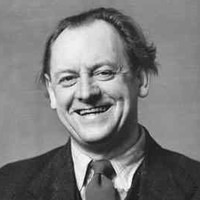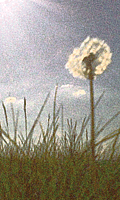


NEWS:
For July we have 9 new shows - including some election specials from Gareth
Artist Info
|
Kurt Schwitters  Image from Discogs  Kurt Schwitters (June 20, 1887 - January 8, 1948) was a German painter who was born in Hannover, Germany. Kurt Schwitters (June 20, 1887 - January 8, 1948) was a German painter who was born in Hannover, Germany.Schwitters worked in several genres and mediums, including Dada, Constructivism, Surrealism, poetry, sound, painting, collage, sculpture, typography and what came to be known as installations. Biography and art Though not a direct participant in Dada activities, he employed Dada ideas in his work, such as his Merz works — art pieces built up of found objects; some were very small, some took the form of large constructions, or what would later in the 20th century be called installations. The Sprengel Museum in Hanover has a reconstruction of the best known of these installations, called Merzbau, which was a redesign of at least four rooms in Schwitters's house in Hanover. (These were not in his apartment, but on the ground floor, in the attic and possibly in the basement.) The original Merzbau was destroyed in an air raid during World War II. According to Schwitters, merz is derived from the name of the Commerzbank; the word is also notably similar to the French word merde. A story is told, but untrue, that he attempted to join the network of Dada artists, only to be rejected by the leader of the Berlin movement, Richard Huelsenbeck, on the premise that Schwitters was "too bourgeois" for Dada. A 2005 exposition on Dada at the Centre Georges Pompidou further acknowledged Schwitters as a member of the larger movement by devoting an entire section to the exhibition of some of his work (Ramade 2005). Thanks to Schwitters' lifelong patron and friend Katherine Dreier, his work was exhibited regularly in the USA from 1920 onwards. Schwitters published his own Merz magazine from 1923-32 and in the late 1920s became a well-known typographer; his best-known work was the catalogue for the Dammerstocksiedlung in Karlsruhe. From 1924 he ran an advertising agency called Merzwerbe, and in the late 1920s was the official typographer of Hannover town council. He became a member of the Deutscher Werkbund (German Work Federation) in the late 1920s. In January 1937 Schwitters fled to Norway, and in the same year, his Merz pictures were included in the Nazi exhibition of degenerate art (entartete Kunst) in Munich. Schwitters started a second Merzbau while in exile in Oslo, Norway in 1937 but abandoned it in 1940 when the Nazis invaded; this Merzbau was subsequently destroyed in a fire in 1951. His hut on the Norwegian island of Hjertoya, near Molde, is also frequently regarded as a Merzbau. Schwitters fled to England, and was initially interned in Douglas Camp, Isle of Man. He spent time in London, then in 1945 moved to the Lake District, where, in 1947, he began work on the last Merzbau, which he called the Merzbarn. One wall of this last structure is now in the Hatton Gallery in Newcastle; the shell of the barn remains in Elterwater, near Ambleside. He composed and performed an early example of sound poetry, Ursonate (1922-32; a translation of the title is Original Sonata). Schwitters also authored the poem An Anna Blume. Schwitters died in Kendal, England, and was buried in Ambleside. His grave was unmarked until 1966 when a stone was erected with the inscription Kurt Schwitters – Creator of Merz. The stone remains as a memorial even though his body was later disinterred and reburied in Hannover, Germany, the grave being marked with a marble copy of his 1929 sculpture Die Herbstzeitlose. A recording of Schwitters performing Ursonate may be found at UBUweb. Read more on Last.fm. User-contributed text is available under the Creative Commons By-SA License; additional terms may apply. Artist biography from last.fm Some other places to look for information: last.fm Discogs MusicBrainz |
